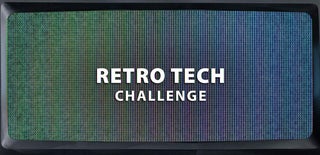Introduction: Rebuilding a 30 Year Old Captain Power Toy
I am a part time collector, and after many years I have bought one each of each of the light interactive toys. But along with the ones that worked, I've bought a few that didn't. One of the interlockers, pictured here, didn't work so I removed the internals and saved the shell of it.
These toys reacted to flashing light and could both "Gain points" and "Lose Points" Depending on the flash rate. I rebuilt the nonworking interlocker into a "Target" for use with my still-working toys.
Step 1: The Empty Shell.
This is the empty shell, and it was missing all of the extra pieces of it. It came with both a light sensor and a light source, which I kept. I also kept the original nonfunctional circuit board.
Step 2: The New Electronics.
Years ago, I built a variable flasher that would make the toys react to it. And a light sensor. But a quick search of Ebay turned up both light sensors(this is a pack of 5, meant for use with Aruduno circuits) and a variable LED flasher.
The light sensor I desoldered the light sensing LED from and soldered two wires to the contacts. I tested the flasher and it wasn't flashing fast enough so again I desoldered the two 22uf capacitors and replaced them with 10uf capacitors which increased the flash rate. The blue Potentiometer adjusts the flash rate and BOTH can run off a single 9 volt battery. And I desoldered one of the LEDs and soldered on wires to its contact points.
Step 3: Sensor and LEDs
These are the sensor/Light source. I soldered wires to the sensor as well as the new white light LED I used. After I made sure they were both secure I set them aside.
Step 4: Installing the Flasher Unit.
I temporarily assembled the flasher section and tested to make sure it works: Then used a drop of hot glue to hold the sensor/light holders in place. I also soldered wires to a rocker switch and hot glued it into place as well. I then adjusted the flash rate to make sure it'll activate the plus/minus points scoring in the toy. Once I made sure it worked I set it aside and went on to the next step.
Step 5: Light Receiver
The next step is to add the light sensor. I soldered the wires of the original sensor to the wires of the sensor board and tried it out. THIS light sensor has an "Always On" LED which turns off when hit with light. And there was a potentiometer to adjust the sensitivity of it. So after I tested it, I soldered the wires together and used heat shrink tubing to cover the connections.
Step 6: Soldering and Setting.
Afterwards I began the process of slipping a heat shrink tube onto the wires, soldering it, then sliding up the tubing and heat shrinking it. Then I set both the sensitivity of the light sensor and set the flash rate to the "Minus Points" flash rate. I then gave it a final test, then re assembled the body, screwing the screws back into place.
Step 7: Cover.
I made a cover for the "Seat Area" using black foam core board.
Step 8: Final Product.
The first pic shows where I mounted the 9 volt battery that powers everything. Visible on the top of the cover is an LED that is connected to the light sensing circuit and is turned ON when the switch is turned on. Hitting the light sensor with the light from any of the toys make the LED turn off for an instant, making it blink. BUT the flashing LED is sending out a light beam that will knock out the toy AT THE SAME TIME! So, this fires back at the toy firing at it!
I do have a fully working Interlocker now. And I've used these circuits to make other light sensitive toys.

Participated in the
Retro Tech Challenge








![Tim's Mechanical Spider Leg [LU9685-20CU]](https://content.instructables.com/FFB/5R4I/LVKZ6G6R/FFB5R4ILVKZ6G6R.png?auto=webp&crop=1.2%3A1&frame=1&width=306)




